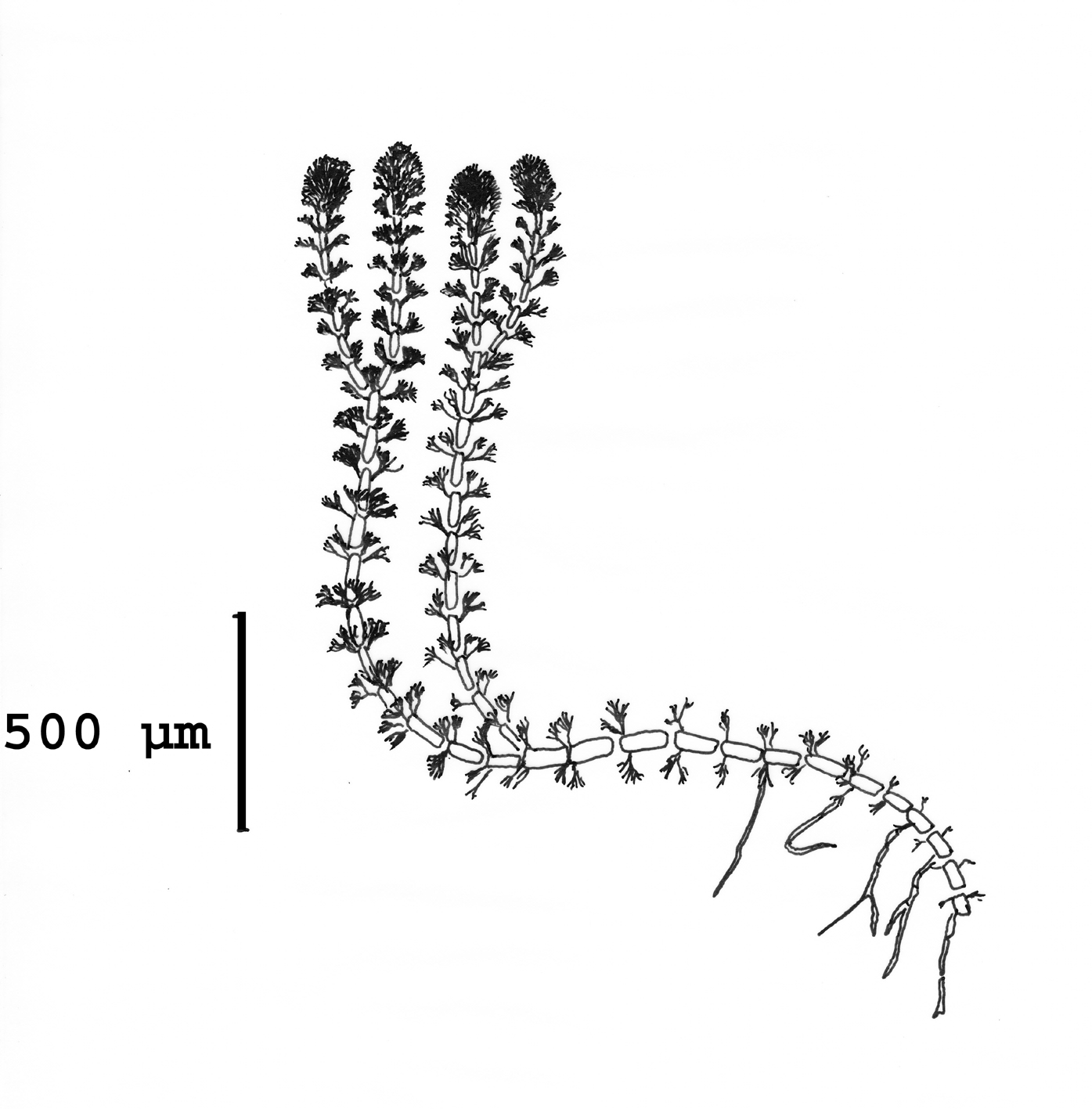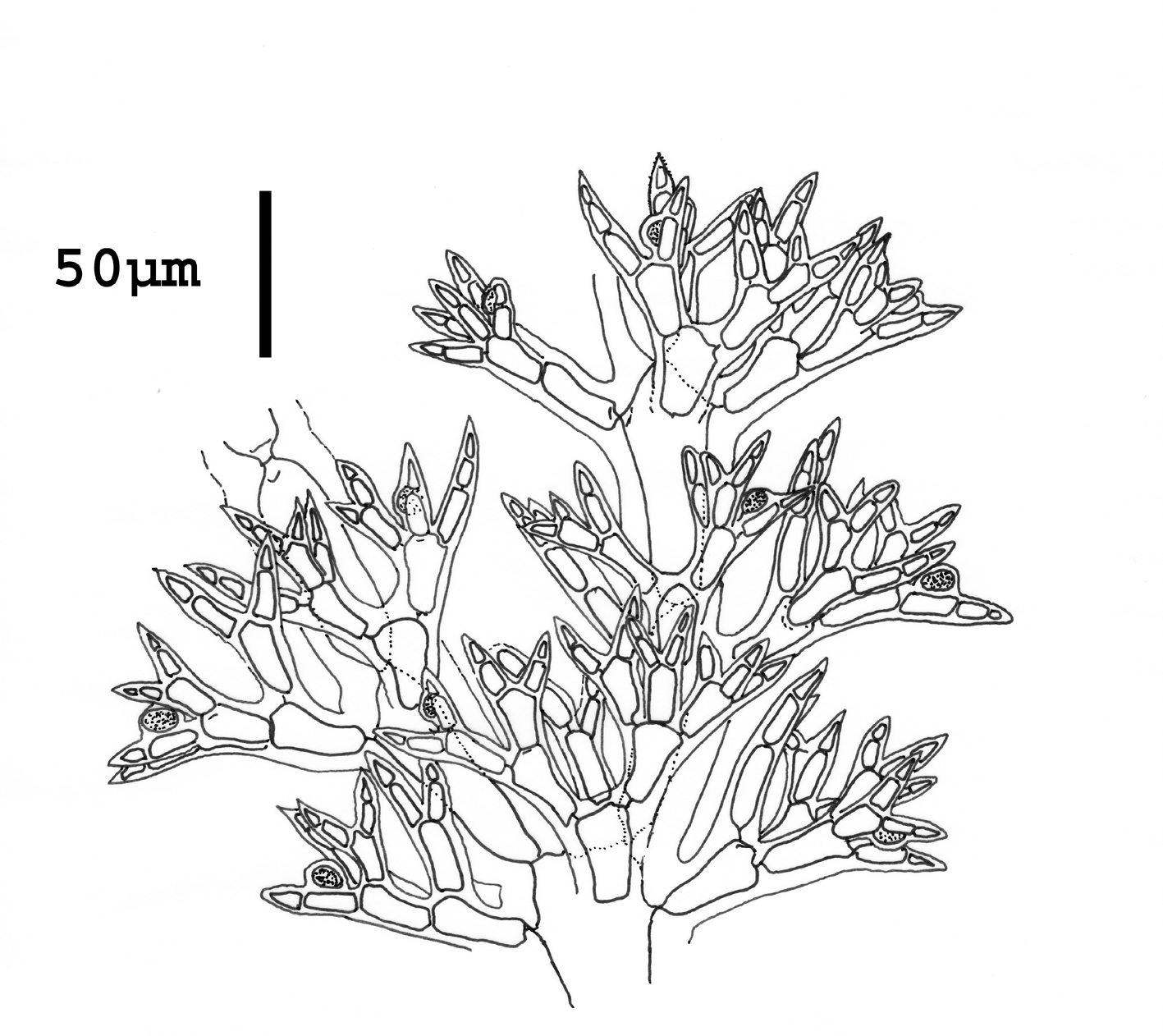Seaweeds of the South African South Coast


Order Ceramiales
Family Ceramiaceae
Amoenothamnion lycopodioides Stegenga 1986: 42-44, pl. 10
Plants minute, partly prostrate, the apices ascending; erect parts only a few mm high. Attachment by means of multicellular rhizoids growing from the basal cell of some of the whorl branchlets. Main axis with seemingly dichotomous branching, up to 40(-60) µm in diameter, the cells ca. twice as long as broad. Each axial cell provided with a whorl of four equal branchlets, each c. 80-100 µm long. In a typical form whorl branchlets branched trichotomously from their basal cell: the middle branch directed upward, parallel to the main axis and usually branched once (to twice); the other branches directed outwards and branched twice. The lower branching trichotomous, the upper one dichotomous. Apical cells of the branchlets acute, in the apical parts of the plant sometimes provided with a unicellular hair. Gland cells generally on the subapical cells of the branchlets, semiglobose, ca. 12 µm in diameter. Reproductive structures not observed.
Collections, ecology and regional distribution
Known only from the type collection at Arniston (23).
World distribution: South African endemic.
Type locality: Waenhuiskrans (Arniston) (Stegenga 1986).

Amoenothamnion lycopodioides. Habit. Re-drawn from Stegenga (1986), part of Fig. 10, 2).

Amoenothamnion lycopodioides. Detail of plant showing whorl branchlets. Re-drawn from Stegenga (1986), part of Fig. 10, 3).
References Amoenothamnion
Stegenga, H. 1986. The Ceramiaceae (excl. Ceramium) (Rhodophyta) of the South West Cape Province, South Africa. Bibliotheca Phycologica 74: 1-149, 1 table, 51 plates.
Cite this record as:
Anderson RJ, Stegenga H, Bolton JJ. 2016. Seaweeds of the South African South Coast.
World Wide Web electronic publication, University of Cape Town, http://southafrseaweeds.uct.ac.za; Accessed on 07 December 2025.